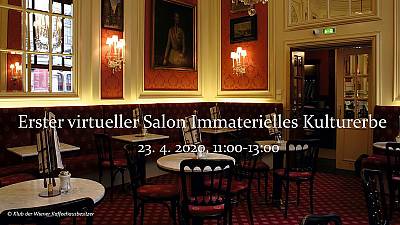Following Covid-19 lockdown measures, the Austrian Commission for UNESCO too has moved to the virtual world and launched the first edition of “VIRTUELLER SALON Immaterielles Kulturerbe” (Virtual Salon Intangible Cultural Heritage) with a view to fostering exchange and dialogue among and with ICH stakeholders in Austria. Community representatives of the 124 elements inscribed on the National Inventory of the ICH in Austria were invited to come together online and almost 50 people participated in the launching event of this new format.
The first edition of the Salon focused on the Covid-19 pandemic and its impact on the intangible cultural heritage in Austria. ICH stakeholders, including bearers, NGOs and experts shared their efforts, concerns and initiaitves with each other. The virtual platform gave room to discuss individual cases and exchange stories, new ideas and inspiring projects that were initiated after the lockdown. One example is presented below:
Local healing knowledge in the Pinzgau region (TEH Verein)
During the Covid-19 pandemic, people were searching for (new) ways to protect themselves from the coronavirus: additionally to washing your hands, are there any herbs or tinctures that could be beneficial to your health, and help enhance your immune system? When disinfectants are suddenly a scarcity, what are the (natural) alternatives? In the Pinzgau region, local knowledge and traditional medicine concerning the uses of plants and herbs, have seen a massive rise in interest from the public. People learned (again) that natural herbs can help the body’s immune system. Thus, the pandemic has raised awareness about the importance of local healing knowledge that has been collected and used to this day in the Pinzgau region in Austria. Nonetheless, since most practitioners are located at the border to Germany, the exchange and transmission is heavily disrupted at the moment.
Other examples included in this survey include Transhumance in the Alps and Färbermuseum Gutau (Museum on blueprint in Gutau).
The designations employed and the presentation in the texts and documents referenced in this platform do not imply the expression of any opinion whatsoever on the part of UNESCO concerning the legal status of any country, territory, city or area or of its authorities or concerning the delimitation of its frontiers or boundaries.
